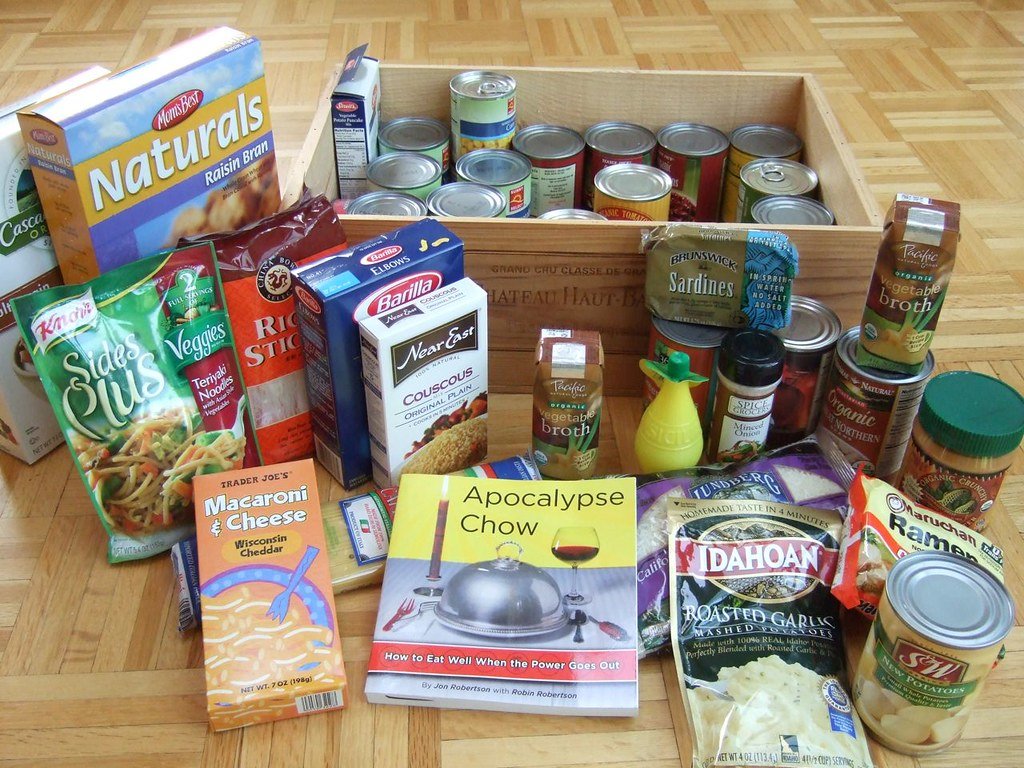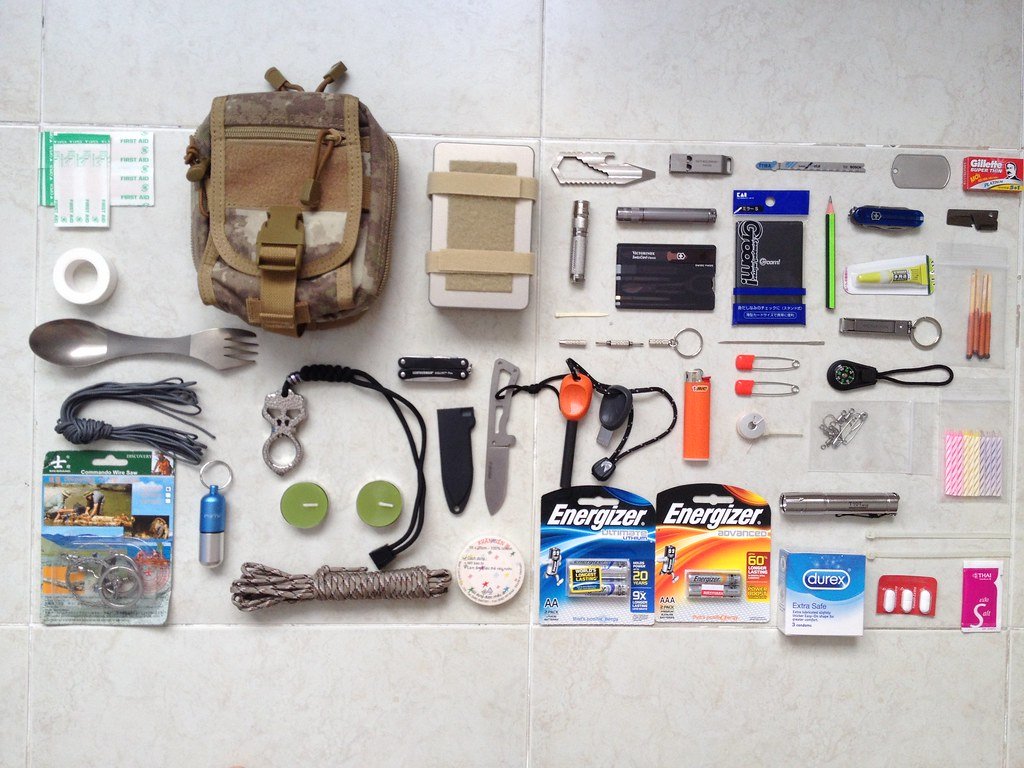Now Reading: How to Store Water for Emergency Situations
-
01
How to Store Water for Emergency Situations

How to Store Water for Emergency Situations
In moments of unexpected turmoil or natural disasters, access to clean water becomes a lifeline we often take for granted. When the faucet runs dry or the water supply becomes compromised, the need for a contingency plan arises. Whether it be power outages, severe weather conditions, or unforeseen incidents, ensuring a secure and reliable water storage system is a prudent step towards safeguarding ourselves and our loved ones. In this article, we will explore a myriad of tried and tested methods to store water for emergency situations, arming you with knowledge that could prove invaluable in times of crisis. So, let’s delve into the world of water storage and equip ourselves with the tools to thrive, even when circumstances attempt to wash away our peace of mind.
Table of Contents
- Planning Ahead: Why Storing Water is Essential in Emergency Situations
- Understanding Water Needs: Calculating the Quantity for Survival
- Choosing the Right Containers: Materials and Features for Long-term Storage
- Preserving Water Quality: Treatment and Purification Techniques
- Maximizing Shelf Life: Tips for Proper Storage and Rotation
- Q&A
- Closing Remarks

Planning Ahead: Why Storing Water is Essential in Emergency Situations
When disaster strikes, having access to clean and safe drinking water becomes a top priority. Emergency situations can leave communities without a reliable water supply for days, or even weeks. That’s why it is crucial to plan ahead and store water to ensure the well-being of yourself and your loved ones during trying times.
Here are some key reasons why storing water is essential in emergency situations:
- Hydration and Survival: Water is essential for our bodies to function properly. In emergency situations, it may be challenging to find a safe and reliable water source. By storing an adequate supply of water, you can ensure you and your family stay hydrated, reducing the risk of dehydration and associated health complications.
- Cooking and Sanitation: Water is not only crucial for drinking, but also for cooking and maintaining proper hygiene. During emergencies, access to clean water for cooking meals and cleaning is limited. By having stored water, you can prevent foodborne illnesses and maintain cleanliness, reducing the risk of infections and diseases.
- Peace of Mind: Knowing that you have a sufficient supply of water stored for emergencies brings peace of mind. It eliminates the stress and uncertainty of finding water sources during chaotic situations. By taking this proactive step, you can focus on other aspects of emergency preparedness and ensure the well-being of your loved ones.
Storing water is a simple yet critical step in being prepared for emergencies. Make sure to store water in clean, airtight containers, and keep them in a cool and dark place to maintain its quality for an extended period. Remember, it is always better to have more stored water than less, as adequate hydration and sanitation are vital in challenging times.

Understanding Water Needs: Calculating the Quantity for Survival
Water is an essential element for our survival, and understanding our water needs is crucial. Determining the correct quantity of water needed to sustain oneself in various situations is vital to ensure our well-being. Let’s take a closer look at how to calculate the necessary water supply for survival.
1. Assessing individual needs: Water requirements vary depending on factors such as age, sex, activity level, and climate. The average adult typically needs around 2-3 liters of water per day, but this amount can increase in hot or arid environments or during intense physical activities.
2. Accounting for emergency situations: In emergency scenarios, it’s important to have an ample water supply. Experts recommend storing a minimum of 3 gallons (approximately 11 liters) of water per person to sustain us in case of unforeseen events like natural disasters or emergencies.
3. Including additional factors: Remember that water needs extend beyond just drinking. Proper hygiene and sanitation also require water. Allocating the right quantity for cooking, cleaning, and personal hygiene is essential, and it’s advisable to consider these factors when calculating your water supply.
By understanding our water needs and estimating the correct quantity for survival, we can ensure that we are prepared for any situation that may arise. Always plan ahead and prioritize water as a crucial element for sustaining life.

Choosing the Right Containers: Materials and Features for Long-term Storage
Materials for Long-term Storage Containers:
- Plastic: Plastic containers are popular for long-term storage due to their durability and resistance to moisture. They come in various sizes and shapes, making them versatile for different storage needs. Look for containers made from high-density polyethylene (HDPE) or polypropylene (PP), as they provide the best protection against UV rays and harsh weather conditions.
- Glass: Glass containers are an excellent choice for long-term storage of delicate or perishable items. While they may be heavier and less flexible than plastic, glass containers offer airtight seals and are free from harmful chemicals. This makes them ideal for storing food items, spices, and medicinal herbs.
- Metal: Metal containers, such as stainless steel or aluminum, are another durable option for long-term storage. They are resistant to corrosion and can withstand extreme temperature changes. Metal containers are particularly suitable for storing non-perishable items like tools, hardware, or important documents.
Key Features to Consider:
- Airtight Seals: Choose containers with secure, airtight seals to prevent moisture, pests, and odors from entering. This ensures the longevity and freshness of stored items.
- Stackability: Opt for containers that are designed to be stackable, as this maximizes storage space and allows for easy organization.
- Transparent Windows: Containers with transparent windows or panels allow you to quickly identify the contents without having to open them. This saves time and eliminates the need for constant labeling.
- Modularity: Look for containers that are part of a modular system. These containers can interlock or nest with each other, offering versatile storage solutions and efficient use of space.
- Impact Resistance: Depending on your storage needs, consider containers that are impact-resistant to protect fragile items from accidental damage.
When choosing the right containers for long-term storage, understanding the materials and features available to you is crucial. This knowledge helps ensure that your items remain safe, organized, and accessible for years to come.
Preserving Water Quality: Treatment and Purification Techniques
Water is a vital resource for our survival, making it essential to preserve its quality through effective treatment and purification techniques. By implementing these methods, we can ensure that our water remains clean and safe for consumption. There are several techniques that can be employed to achieve this goal.
1. Filtration: One of the primary methods of water treatment is filtration. This process involves passing water through a medium that removes impurities, such as sediment, debris, and even some microorganisms. Filtration can be done using various mediums such as sand, activated carbon, or ceramic filters.
2. Disinfection: Another crucial step in water purification is disinfection. This process eliminates harmful pathogens and microorganisms from the water, making it safe to drink. Chlorination, ozonation, and UV radiation are commonly used methods to achieve this. These techniques effectively kill or inactivate harmful bacteria, viruses, and parasites, ensuring that the water is free from contamination.
3. Chemical Treatment: In addition to filtration and disinfection, chemical treatments play a significant role in preserving water quality. Coagulation and flocculation methods are employed to remove suspended solids and organic matter. Chemicals such as alum or ferric chloride are added to the water, causing the particles to clump together and settle down. Further, lime softening or ion exchange processes can be used to remove hard minerals and reduce water hardness.
It is essential to understand and implement these treatment and purification techniques to safeguard our water resources. By doing so, we can contribute to a sustainable future where clean and safe water is available to all. Remember, preserving water quality is not just a responsibility but a necessity for the well-being of our planet and future generations.
Maximizing Shelf Life: Tips for Proper Storage and Rotation
Proper storage and rotation are essential for maximizing the shelf life of your products. By following these tips, you can ensure that your items stay fresh and safe to consume for a longer period of time.
- Inspect packaging: Before storing any product, carefully inspect the packaging for any signs of damage or tampering. Damaged packaging can accelerate spoilage and contamination, reducing the shelf life of the item.
- Temperature control: Maintaining the appropriate temperature is crucial for preserving the quality of various products. Ensure that perishable items, such as dairy and meat, are stored in a refrigerator at or below 40°F (4°C). Non-perishable goods, on the other hand, should be kept in a cool, dry place away from direct sunlight.
- First in, first out (FIFO) method: Implementing a proper rotation system is key to prevent spoilage and wastage. Use the FIFO method by placing newly purchased items at the back of shelves or storage areas, and moving older products to the front. This way, you will be using the oldest items before they expire.
- Properly seal containers: Ensure that all containers, bags, or cans are tightly sealed to prevent air and moisture from causing spoilage. This is particularly important for dry goods, as exposure to air can lead to loss of flavor and nutritional value.
- Frequent inventory checks: Regularly monitor your inventory to take note of expiration dates and discard items that have surpassed their shelf life. Consider using labels or color coding systems to easily identify which products need to be used or disposed of first.
By following these simple guidelines, you can effectively maximize the shelf life of your products, reduce waste, and ensure the quality of your stored items.
Q&A
How can I store water for emergency situations?
You can store water by using clean, food-grade containers such as plastic or glass jugs, or large water storage tanks. It is important to clean and sanitize the containers before use and label them with the date of storage.
How much water should I store for emergencies?
It is recommended to store at least one gallon of water per person per day for drinking and sanitation purposes. For a family of four, this would amount to storing 12 gallons of water for a three-day emergency supply.
What should I consider when choosing storage containers?
When choosing storage containers for water, make sure they are made from food-grade materials and have a tight-fitting lid to prevent contamination. For long-term storage, opt for opaque containers to block out light and avoid bacterial growth.
How often should I replace the stored water?
Water should be replaced every six months. To keep track, write the date of storage on the containers. If you notice any change in odor, taste, or color, it is recommended to replace the water sooner.
Where should I store the water?
Water should be stored in a cool, dark place away from direct sunlight. Avoid storing it near chemicals, gasoline, or any other substances that may contaminate the water. Basements or pantries are suitable locations for water storage.
What if tap water becomes unsafe to drink?
If tap water becomes unsafe to drink during an emergency, you can purify it by boiling it for at least one minute, using water purification tablets, or a water filter designed to remove bacteria and other contaminants.
Closing Remarks
As we bid adieu to this knowledge-packed expedition on storing water for emergency situations, may we part ways with a sense of preparedness and peace of mind. Remember, dear reader, that water is the essence of life, the elixir that sustains us. When disaster strikes, and the world tilts off its axis, the calmest of seas can transform into the tempest of chaos. Yet fear not, for armed with the wisdom shared within these pages, you are now equipped to weather any storm.
Imagine the tranquility coursing through your veins as you deftly reach for that trusty jug of water, knowing that you and your loved ones will not face thirst’s merciless grip even amidst adversity. The beauty of preparedness lies not solely in the ability to cope with disaster, but also in the power it lends to the spirit, providing solace and strength to face whatever challenges lay ahead.
Go forth, my intrepid friend, and ensure that your provisions remain ever ready, guarding against the unknown with a steadfast resilience. Let not the idleness of complacency take root within your soul, for emergencies do not announce their arrival; they simply demand our response. Treasure this newfound knowledge, nurture it like the life-giving stream that it is, and let it flow through your veins, connecting you to a legacy of survival.
In closing, may we find comfort in knowing that we have taken the first step towards securing our future, however uncertain it may be. Savor the peace that comes from preparedness, for it allows us to gaze upon our loved ones with unwavering determination, knowing that we possess the tools to shield them from harm. As we bring an end to this exploration into the world of storing water for emergencies, remember that you are now part of a community, bonded by a shared understanding of the invaluable resource we call water.
So, dear reader, go forth with a renewed sense of confidence, knowing that you hold in your hands the ability to turn adversity into triumph, to transform fear into resilience. Embrace this newfound power and let it guide you through the twists and turns that life may throw your way. Stay calm, stay prepared, and may your path always lead you to the safety and serenity of a well-stocked water supply.
As an affiliate, my content may feature links to products I personally use and recommend. By taking action, like subscribing or making a purchase, you’ll be supporting my work and fueling my taco cravings at the same time. Win-win, right?
Want to read more? Check out our Affiliate Disclosure page.





